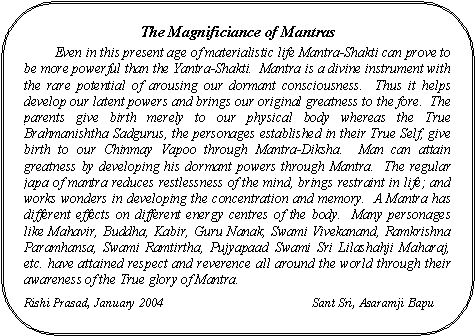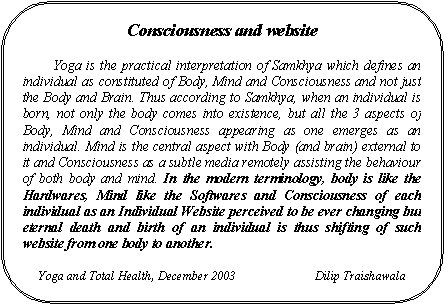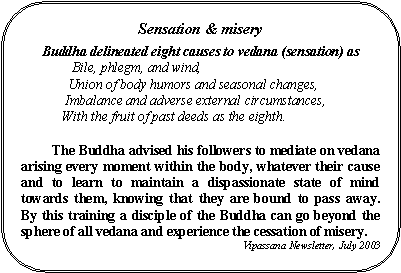|
|
|
Red
Alert
Blood storage bags are unhealthy: During the first study of its kind, researchers discovered that a chemical leaching out of bags storing donated blood poses acute health hazards for patients who need frequent transfusions. The findings have wide-reaching implications, as blood banks across the world store blood in polyvinyl chloride (PVC) bags, made with the chemical called DEHP. The manufacturers of PVC favour DEHP since it cheap. Publicly, they justify the usage by asserting that DEHP has low solubility risk and does not lead to haemolysis (damage to red blood cells). But the former claim is erroneous, shows the study conducted by P A Kurup and his colleagues from the biology department of Terumo Penpol Limited, a Thiruvananthapuram-based organisation. As per their findings, substantial amount of DEHP can dissolve in the blood. They found that rats continually exposed to the chemical developed degenerative changes in their brain. DEHP also inhibited the production of a enzyme called na-k-atpase in the liver, brain and red blood cells of the rats. A decrease in the level of this enzyme is associated with neurological disorders and heart diseases. The findings provide impetus to replace DEHP-based bags. Alternatives are available – bags made of butryl n-trihexyl citrate; but they are expensive. February 29, 2004 Down To Earth
***** Data
Overload
If
you feel that you’re being buried under and avalanche of information,
there’s a good reason: The amount of information produced and stored
across the world has doubled in the last 3 years. In
a new report, How Much Information 2003?, information scientists at
the University of California, Berkeley, estimate that enough print, film,
magnetic, and optical storage material were produced last year to fill the
Library of Congress 500,000 times. That
is equal to 5 exabytes (1018) of information, approximately the
number of words spoken by human beings since the dawn of time.
Worldwide data production has
increased 30% annually between 1999 and 2002, says Peter Lyman, one of the
authors. E-mails alone
generated 400,000 terabytes of information. (A terabyte is enough to fill
up paper from 50,000 trees). The
researchers compiled their numbers after asking people about their use of
hard drives and monitoring “Peer to Peer” networks used to download
music as well as sampling archives from the World Wide Web. The report is drawn mostly from the industrialized world. Information produced in poor countries is “almost invisible, due to a paucity of government statistics,” says Lyman. November
21, 2003 Science Vol. 302 ***** Lead
and male Infertility
Exposure to lead damages sperm
function and could contribute to unexplained male infertility, conclude
investigators in Hum Reprod.
The researchers did a prospective double-blind study of metal ion
concentrations and sperm function in the partners of
women undergoing their first cycle of in-vitro fertilization.
They found that lead concentrations in seminal plasma varied
greatly between individuals and that changes in lead concentrations
accounted for a fifth of the variation in fertilisation rates.
The scientists recommend that doctors measure the lead
concentration in seminal plasma when assessing men from couples with
unexplained infertility. February
8, 2003 The Lancet ***** Gold
mine
US researchers identify 1.2 million bacterial genes:
US-based Institute for Biological and Energy Alternatives, Venter has
identified 1,800 new species of microbes, and over 1.2 million microbial
genes. The microbes were
filtered from the seawater of the Sargasso sea, off the cost of Bermuda. Raymond Orbach of the US department of energy, which partially funded the study, says the development could lead to new energy sources. “Our study may help provide bacterial photoreceptors, which can harvest light to make hydrogen,” the researchers claim in their paper published in the journal Science. According to Orbach, the new bacteria can also be used for bioremediation-use of microbes to clean-up sites contaminated by hazardous chemicals or radiation. April
15, 2004 Down to Earth. ***** Future
AIDS vaccine
The International AIDS
Vaccine Initiative (IAVI)’s mission is to help produce and distribute a
safe vaccine against HIV. The
IAVI announced at the XIII International AIDS Conference about the
approval of Phase I testing of a safe DNA based AIDS vaccine for HIV
subtype A., the most common strain in many parts of Africa. March 2004, Wista ***** |
|
|
|
Amazing facts about your body
April 10, 2024 The Hitvada ***** |
A bit of ajwainCan
cure ringworm infection. An ointment prepared from
ajwain can cure ringworm infection without any side effects as in
allopathic drugs says M.Sharma, a New Delhi based ayurvedic physician. The
researchers tested the effectiveness of both ajwain oil and griseofulvin
(an antibiotic commonly used for treating ringworm infection) against this
infection and observed that in most cases the ajwain oil was much more
effective than griseofulvin. The
researchers then tested an ointment consisting of one per cent of the
ajwain oil on 30 people suffering from ringworm infection. The medication
was applied twice a day for three weeks. All the 30 patients recovered
completely after the treatment. The
ointment with more percentage of the oil was found to be effective. September 15, 2003 Down to Earth ***** |
|
|
Scientists
make a sperm in a dish
Scientists
and bioethicists report that mouse embryonic stem (ES) cells could become
egg cells in a dish. The news
spawned speculation that babies might someday be born whose genetic “mother”
was a stem cell line. Now,
two independent teams have shown that sperm, too, can develop in the lab
from mouse ES cells. Researchers
describe how they isolated male germ cells from differentiating mouse ES
cells. They allowed mouse ES
cells to form so- called embryoid bodies, clumps of differentiating cells
that produce a variety of cell types.
In those clumps, the researchers were able to identify and isolate
cells expressing genes typical of immature sperm. Because
undifferentiated ES cells express many of the same genes as germ cells,
the researchers put their putative germ cells to a test: They exposed them
to retinoic acid. Developing
germ cells typically reproduce in the presence of retinoic acid, whereas
ES cells stop dividing and start to differentiate.
The cells continued to divide.
To test whether the cells were undergoing some of the normal stages
of sperm development, the team looked at whether they had undergone
imprinting. After 4 days of
development, most of the germ cells still carried their original
imprinting pattern, but after 10 days in culture, all such signals had
been erased, suggesting that the first step of normal imprinting had
occurred. The
production of immature sperm was not very efficient, but the cells that
were produced did seem to be nearly as potent as their natural
counterparts. When the team
injected the immature sperm into oocytes, one in five developed into
blastocysts, in which the embryo forms a hollow ball of cells.
The scientists have tried to establish a pregnancy with their
dish-derived sperm, but so far without success. Noce’s
team showed that germ cells that had been derived using techniques similar
to Daley’s and transplanted into the testes of adult mice could
apparently develop into mature sperm. The group did not show that the sperm could fertilize oocytes. Although
the new work raises the specter of children derived from artificial sex
cells, such a development “is really science fiction for now,” says
Geijsen. “What we have is a
great system where we can study imprinting” and other details of sex
cell development, he says. Daley’s
team is trying to reproduce the feat using human ES cells, but “we’re
certainly not taking it toward assisted reproduction,” he says.
Developmental biologist Hans Scholer of the University of Pennsylvania
School of Veterinary Medicine in Kennett Square, who showed in May that
oocytes could develop from mouse ES cells, cautions against attempting to
apply the findings to human infertility.
The risk of introduced mutations is too high, he says, because
there would be no way to test whether the ES cells had acquired mutations
in the lab. December 12, 2003 Science Vol. 302 ***** |
|
|
Thrombosis
from computers
Sitting
in front of the computer for long periods of time could increase the risk
of thrombosis, say researchers. The doctors diagnosed a life-threatening
case of venous thromboemobolism in a 32-year-old man who regularly spent
up to12 hr a day using his computer, often going hours without standing
up.
The patient had no other risk factors for the disorder.
The researchers recommend that all people who sit for extended
periods of time at a computer should undertake frequent leg and foot
exercises and take regular breaks away from the computer. February 1, 2003 The Lacent Vol. 361*****
|
Mother’s
blood has baby’s genes
Fetal
mRNA leaves the placenta and circulates in the blood of pregnant women,
according to an article in proc Natl Acad Sci USA.
Previously, fetal DNA in maternal blood was detected through
genes in Y-chromosomes, restricting screening to women carrying male
fetuses. In this study the
researchers detected two types of placental mRNA in maternal plasma.
Human placenta lactogen was detected in every sample of maternal
blood tested, whereas human chorionic gonadotropin dwindled as pregnancy
progressed. Tests done
immediately after birth did not detect either type of mRNA in the maternal
blood samples. March 22, 2003 The Lancet ***** |
Treatment for back pain
Spinal
manipulation is better than sham therapies for lower back pain but is
neither better nor worse than conventional treatments, say investigators
in Ann Interm Med.
The findings were the result of a meta-analysis of 39
randomised, controlled trials including 5486 patients, In a review
of the effectiveness, safety and cost of acupuncture, massage
therapy, and spinal manipulation for persistent back pain another group of
investigators found that massage had some benefit; spinal manipulative
therapy had small clinical benefits equivalent to those of pain killing
drugs, physical therapy or back exercises; and that the effectiveness of
acupuncture remains unclear. June
7, 2003 The Lancet Vol. 361 ***** |
New
diabetes drug target
Scientists have
identified a molecule that might be a useful drug target for type
2 diabetes, according to research in Science.
The investigators found that expression of the molecule TRB3 is
induced under fasting conditions and the molecule disrupts insulin
signalling in mice by binding to the enzyme Akt, which stops the liver
from producing glucose when this sugar is available from food.
Thus, the investigators believe that by interfering with Akt
activation, TRB3 contributes to insulin resistance in individuals who are
susceptible to type 2 diabetes. June 7, 2003 The Lancet Vol. 361 ***** |

***** |
Spices with anti-HIV potentialMedicinal plants possessing
anti-HIV properties have been studied due to global need of natural
products preference by the society. Spices
like turmeric, clove and black cumin commonly used in kitchen for cooking
and other preparations have shown anti-HIV activity.
The
curcuminoids isolated from ethyl extract of rhizome of turmeric, Curcuma
longa Linn. Showed modest HIV-1 and HIV-2 protease inhibitory
activity. Black cumin, Nigella sativa Linn. Seed
extract showed inhibition of HIV-PR and clove, Syzygium aromaticum (Linn.)
Merrill & Perry is used in pharmaceutical preparations for the
treatment of AIDS. January-February 2004, Natural Product Radiance Vol. 3(1) ***** |
How do
Internet search engines work?
Publicly available Web services-such as Google, InfoSeek, Northernlight and Alta Vista–employ various techniques to speed up and refine their searches. The three most common methods are known as preprocessing the data, “smart” representation and prioritizing the results. One
way to save search time is to match the Web user’s query against an
index file of preprocessed data stored in one location, instead of sorting
through millions of web sites. To
update the preprocessed data, software called a crawler is sent
periodically by the database to collect Web pages.
A different program parses the retrieved pages to extract search
words. These words are
stored, along with the links to the corresponding pages, in the index
file. New user queries
are then matched against this index file.
Smart
representation refers to selecting an index structure that minimizes
search time. Data are far
more efficiently organized in a “tree” than in a sequential list. In an index tree the search starts at the “top,” or root
note. For search terms that
starts with letters that are earlier in the alphabet than the node word,
the search proceeds down a “left” branch; for later letters,
“right.” At each
subsequent node there are further branches to try, until the search term
is either found or established as not being on the tree.
The
URLs, or links, produced as a result of such searches are usually
numerous. But because of
ambiguities of language, the resulting links would generally not be
equally relevant. To glean
the most pertinent records, the search algorithm applies ranking
strategies. A common method,
known as term-frequency-inverse document-frequency, determines relative
weights for words to signify their importance in individual documents; the
weights are based on the distribution of the words and the frequency with
which they occur. Words that
occur very often (such as “or” “to” and “with”) and that
appear in many documents have substantially less weight than do words that
appear in many documents have substantially less weight than do words that
appear in relatively few documents and are semantically more relevant.
Link analysis is another weighting strategy. This technique
considers the nature of each page-namely, if it is an “authority” or a
“hub.” The highly successful Google search engine uses this method
to polish searchers. January 2003, Scientific American ***** |
Distinctive
diagnosis
Unlike current diarrhoea detection techniques, a new method diagnoses the disease within one hour. Many different infections caused by viruses and bacteria can trigger diarrhoea and cause severe dehydration. But the condition can also be the symptom of cholera or typhoid. “So the exact cause has to be diagnosed,” says Chris Probert from the University of Bristol, the UK, who has developed the new test. His technique works by analysing the distinctive gases emitted by the bugs in a person’s stool. March 31, 2004 Down to Earth ***** |
|
***** |
Venter cooks up a synthetic genome in record time.When the U.S. Department of energy (DOE) announced last week that sequencing maverick J. Craig Venter had taken just 2 weeks to build a viral genome from scratch, Secretary of Energy Spencer Abraham called the work “nothing short of amazing.” He predicted that it could lead to the creation of microbes tailored to deal with pollution or excess carbon dioxide or even to meet future fuel needs. The genome synthesized by the Venter-led group belongs to a bacterial virus, called a phage; when it was tested in a lifelike situation, Venter reported, it infected and killed bacteria just as a natural phages would. Because his team stitched together the phage’s DNA in just a few weeks instead of years. Moreover, Ari Patrinos, who heads the DOE research program that supports Venter’s group, argues that this small advance could have large ramifications. He compared the synthesis of the phage genome to early DNA sequencing: “It was rarely used” at first, but when sequencing: became fast and accurate, its use exploded. He thinks Venter’s “incremental step” may eventually have the same effect on the field. Venter’s lab isn’t the first to stitch together an artificial genome. Molecular biologists have been trying to do this ever since they started generating the entire sequences of organisms. Last year, Wimmer and his colleagues assembled the 7000-base poliovirus genome from small pieces of synthesized DNA. And they made headlines when they showed that the virus was active. But the task took 3 years to finish. This summer, Venter set out to do better. His team included IBEA collaborators Hamilton Smith and Cynthia Pfannkoch, and Clyde Hutchison of the University of North Carolina, Chapel Hill. Like Wimmer, they started with short pieces of DNA, pieced them together by matching up overlapping ends, and eventually generated a complete 5400-base-pair phage genome. Their approach differed from Wimmer’s, however. They modified and added steps to speed the sequence’s assembly and to make it more accurate. Venter is convinced that he can build genomes 300,000 bases or longer. But
even with these improvements, skeptics and supporters aren’t sure how
well the procedure will work for organisms with larger genomes.
“Going from a phage to a microbial genome to having a microbe
that’s synthetic is a very major step,” says Patrinos. But he thinks it’s worth betting on. November 21, 2003 Science Vol. 302 ***** |
|
***** |
A
map of human variation
A project to map how humankind varies genetically has unveiled its Web site, along with a first batch of data. The international HapMap Project is making a “haplotype map” of common patterns of variation by examining mutations in the DNA of 270 people of European, Nigerian, Japanese, and Chinese descent. The public data should be a boon to researchers looking for genes that make people susceptible to disease or side effects from drugs. A year into the 3-year project, the HapMap project on 1 November released over 13 million genotypes from 145,554 mutations, known as SNPs. You can browse alleles for mutation frequencies, or get genotype data for individuals by registering and agreeing to conditions, such as not patenting the data. In the coming months, the site will add material to explain the HapMap to the public. November
21, 2003
Science
Vol.
302. ***** |
Medicinal
potential of grape leaves
In Europe the grapes leaves especially those varieties with dark grapes and red pulp, are used in traditional medicine in case of venous diseases. In clinical trial it was possible to prove the efficacy of preparations from the red vine leaf in the treatment of venous insufficiency. The leaves are also used as astringent, in the treatment of diarrhoea, bleedings, haemorrhoids and varicose veins. Compared to the grape berries, grape leaves are richer in the content of carotenoids and vitamin C. Biochemical analysis revealed that the red vine polyphenols are also present in the leaf, some of them like flavonoids, even in higher concentrations. For this reason, red vine leaves or preparations from these leaves, could be of interest for the development of new prophylactic or therapeutic agents in the field of coronary heart disease. January-February 2004 Natural Product Radiance Vol. 3(1) ***** |
How
long can the average person survive without water?
It is impossible to give a definitive answer to this seemingly simple question because many variable factors determine a person’s survival time. Under the most extreme conditions - a child left in a closed hot car, say-death can come rather quickly. An adult in comfortable surroundings, in contrast, can survive for a week or more with no water intake.
To
stay healthy, humans must maintain water balance. We lose water mainly
through sweat, urine, feces, and also by exhalation.
Sweating is the only physiological mechanism which helps to
cool the entire human body. If
that lost water is not replaced, the total volume of body fluid can fall
quickly and, most dangerously, blood volume can drop.
If this happens, two potentially life-threatening problems arise:
body temperature can soar
even higher, while blood pressure decreases because of the low blood
volume. Most people cannot survive long under such conditions.
Because of their greater skin-surface-to-volume ratio, children are
especially susceptible to rapid overheating and dehydration.
A
person can stay hydrated by drinking various kinds of fluids, with one
exception. Alcoholic beverages cause dehydration because ethanol increases
urine volume such that more fluid is lost in urine than is gained from the
beverage. March
2003, Scientific American ***** |
Wired for weight controlLeptin is a fat-derived hormone that plays a key role in regulating body weight. Surprising results from two independent research groups may force revision of current models of when and how leptin exerts it effects on body weight. During a restricted period in neonates, Bouret et. al. show that leptin functions as a neurotrophic factor by directing the formation of neutral projection pathways in the arcuate nucleus of the hypothalamus (ARH). Later in life, leptin targets these same pathways to regulate food intake and energy balance. Pinto et al. find that adult mice deficient in leptin differ significantly from wild-type mice in the number of excitatory and inhibitory synapses in ARH. Single dose administration of leptin to the mutant mice induces rapid rewiring of the synaptic connections so that they more closely resemble those seen in wild-type mice. April 2, 2004 Science Vol. 304 ***** |
Sugar
and spice and
|
|
***** |
Shyness
all in the brain
Whether a person is shy or outgoing might depend on differences in the brain that have existed since early childhood, US researchers report this week. Using functional MRI (fMRI), Carl Schwartz and colleagues measured the response of the amygdala to new versus familiar faces in people who had been categorized as inhibited (n=13) or uninhibited (n=9) at 2 years of age. They showed that adults who were inhibited as toddlers had greater fMRI signal responses in the amygdala to novel versus familiar faces than those who had been categorised as uninhibited as infants. June 21, 2003 The Lancet Vol. 361 ***** |
Are
humans the only primates that cry?
If crying is defined as tears coming from the eyes, then the answer is yes: tears appear to be unique to humans among the primates. If you define crying as a vocalization that occurs under conditions of distress, what human might describe as sadness, then you can find it in almost all primates. Others argue that all mammals have feelings, because emotions are the product of deep-brain functioning with a long evolutionary history. Some researchers reserve such emotional terms for alone and will not use such words for other primates. Some scientists take a conservative stance and say that it is too difficult to tell whether or not nonhuman primates have feelings. Rather than broadly describing particular primate vocalizations as crying, scientists prefer specific names for certain conditions. For example, young primate that is not in contact with its mother produces a separation call. Researchers also describe what the vocalization sounds like, as with the “smooth early high” coos of Japanese macaques. Or scientists note what the animal is trying to communicate, such as when infants try to satisfy their basic needs for food, social contact or relief from pain. November 2003, Scientific American ***** |
|
***** |
What
is quicksand?
Quicksand is a mixture of sand and water or of sand and air; it looks solid but becomes unstable when it is disturbed by any additional stress. Grains frequently are elongated rather than spherical, so loose packing can produce a configuration in which the spaces between the granules, or voids, filled with air or water make up 30 or 70 percent of the total volume. This arrangement is similar to a house of cards, in which the space between the cards is significantly greater than the space occupied by the cards. In quicksand, the sand collapses, or becomes “quick’” when force from loading, vibration or the upward migration of water overcomes the friction holding the particles in place. In normal sand, in contrast, tight packing forms a rigid mass, with voids making up only about 25 to 30 percent of the volume. Most quicksand occurs in settings where there are natural springs, such as at the base of alluvial fans along riverbanks or on beaches at low tide. Quicksand does appear in deserts, on the loosely packed, downwind sides of dunes, but this is rare. And the amount of sinking is limited to a few centimeters, because once the air in the voids is expelled, the grains nestle too close together to allow further compaction. January
2003, Scientific American ***** |
Undiluted evidenceHow homeopathic medicine work wonder. An experiment conducted by Louis Rey, the scientific advisor of Switzerland, indicates how the potency of homeopathic medicine is maintained even if they are diluted several times during preparation. Most question the efficacy of homeopathic medicines on the grounds of serial dilution-the medicines are diluted many times so that they do not contain even a single molecule of the active ingredient. Some experts assert that if the active ingredient is not present, the medicines cannot prove effective. However, homeopathic practitioners believe the dilution makes the medicines more potent. They claim water retains the memory of the substance that has been added to it. Ray’s recent experiment showed that the presence of active ingredient alters the chemical of chemical bonding of water and the change is maintained even when the solution is diluted several times (thus indicating that the medicines do not lose their efficacy). He used thermo-luminescence, an indicator of the chemical structure of a substance, to prove the premise. To calculate the thermo-luminescence, a substance is frozen and then subjected to radiation. Thereafter, it is heated so that the absorbed energy is released in the form of light, which is the measure of thermoluminescence. Rey calculated the thermoluminescence of heavy water and found that it emits two peaks of light. He then added lithium chloride and sodium chloride to the water and found that it emitted just one peak, indicating that its chemical structure had altered. The change was maintained even when the water was diluted to around 10-30 grammes of the solute per cubic centimetre of the water. However, some experts are sceptical about the experiment. Martin Chaplin from the UK-based South Bank University asserts that freezing the water rearranges its hydrogen bonds, thus making it chemically different from the water used for making homoeopathic medicines. Brendan James Howlin, an inorganic chemist from the UK-based University of Surrey, also points out that heavy water is not used for preparing homeopathic medicines. The chemical structure of normal water may be vastly different from heavy water. Therefore, to prove the efficacy of homeopathic medicines, it is a must to assess whether normal water behaves in the same way as heavy and frozen water. August 31, 2003 Down to Earth ***** |
Use
of plastics as a fuel
The fuel called as
‘Subcoal’ is a new way to use plastics from household refuse as a
substitute for coal. In this
process plastics refuse is made into pellets that can be co-combusted with
coal in power stations, thereby regaining the energy content of the
plastics and reducing coal consumption.
The use of subcoal saves energy and reduces carbon dioxide
emissions. July-August 2003, Natural Product Radiance Vol 2(4) |
|
Edited by Dr. Mehandale |
BACK |






